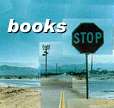|

|
|
|
|
|
|
Secret
Knowledge: Rediscovering the Lost Techniques of the Old Masters
British
painter David Hockney, well known for his cool and lovely paintings
of California pools, has taken on the new role of detective.
For two years Hockney seriously investigated the painting techniques
of the old masters, and like any admirable sleuth, compiled
substantial evidence to support his revolutionary theory. Secret
Knowledge is the fruit of this labor, an exhaustive treatise
in pictures revealing clues that some of the world's most famous
painters, Ingres, Velázquez, Caravaggio (just to mention a few)
utilized optics and lenses in creating their masterpieces. Hockney's
fascination with the subject is contagious, and the book feels
almost like a game with each analysis a "How'd they do that?"
instead of a whodunit. While some may find the technical revelation
a disappointment in terms of the idea of genius, Hockney is
quick to point out that the use of optics does not diminish
the immensity of artistic achievement. He reminds the reader
that a tool is just a tool, and it is still the artist's hand
and creative vision that produce a work of art.
|
|
|
|
Brandt
: The Photography of Bill Brandt
Bill Brandt, one of
the most prolific 20th-century photographers, is beautifully
represented by this volume, which contains nearly 400 of his
black-and-white photographs. These range from his famous, starkly
disturbing portraits of the denizens of either end of the social
ladder to his late, poetic landscapes and cool, studied, abstract
nudes. In between are several series that contain singular images
of great familiarity, such as his portrait of painter Francis
Bacon in an eerie, lamp-lit landscape, or the one of two housemaids
in starched white caps standing at attention behind an upper-crust
dining-room table. Brandt's passionate interest in the shocking
juxtaposition of the very rich and the very poor brought him
a wide audience as well as accusations of being a Socialist
propagandist. During the Great Depression, Brandt traveled to
the north of England and made some of the most devastating pictures
of his career, exposing the extreme poverty--and dignity--of
the area's coal miners. Author Bill Jay has divided this book
into eight sections: A European Apprentice, Observing the English,
Courting the Surreal, Journeys North, The Dark City (Brandt
made haunting pictures of wartime London during the blackouts),
A Return to Poetry, Portraying the Artist, and the Perfection
of Form. Jay's introduction is warm and perceptive--and laced
with juicy anecdotes. Nigel Warburton, another Brandt expert,
contributes an illustrated time-line of Brandt's many professional
assignments, under the rubric "The Career." This carefully edited
book demonstrates why Brandt has always enjoyed high stature
among artists, for it is packed with individual masterpieces.
But even if it were not, it would be powerful simply for the
breadth of Brandt's accomplishments.
|
|
|
|
David
Hockney (Modern Masters Series, Vol. 17)
Hockney's engaging personality,
his quirky but always enlightening ideas about art, and his
inexhaustible inventiveness are captured with clear-eyed intelligence
and grace in the newest volume in Abbeville's renowned Modern
Master Series. Illustrations.
|
|
|
|
David
Hockney's Dog Days
David Hockney's Dog
Days is the slightest of books, but that may be just fine for
dachshund lovers, who will be its best audience. Hockney's drawings
and paintings of his two dogs are full of tender love. They
are "not very good models," he says. "One knock on the door
is enough to make them leap up." So he paints them snoozing,
mostly horizontal (as dachshunds usually are), and mostly on
yellow and blue backgrounds, which can be monotonous. These
are not the dachshunds of Pierre Bonnard, who made strange black
holes in otherwise glorious canvasses. No matter: Hockney offers
"no apologies." Speaking as a dog lover, he explains, "These
two little creatures are my friends.
|
|
|
|
David
Hockney : Paintings |
| |
|
|